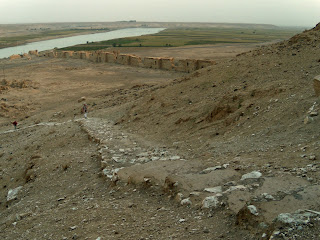Modern technology enables to create a great many things we otherwise only could dream of. One of such a little marvel is bringing a Greek drinking party or symposium to life.
The idea was developed by the University of Oxford Faculty of Classics using a drinking cup from the Ashmolean Museum
In my earlier blog about Plato’s Symposium, I highlighted the main event of such a meeting based on Plato’s report, but evidently there is much more to it.
In my earlier blog about Plato’s Symposium, I highlighted the main event of such a meeting based on Plato’s report, but evidently there is much more to it.
There is, for instance, the competitive aspect of Greek life which is also present in their symposia. It is about who tells the best jokes or the best stories, who was best at playing games or debating or even who was best at hitting the target by flinging the bottom content of his wine cup. Competition to draw the attention of a potential (male) lover was another favorite subject. This Greek competitiveness could easily turn into merciless rivalry. In the end, symposia were far more than a simple pastime.
The entire story of this drinking cup can further be “read” in the details given at the Panoply Vase Animation Project.











